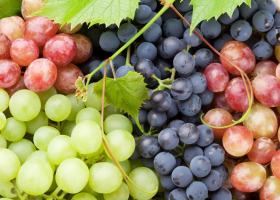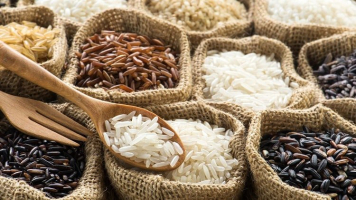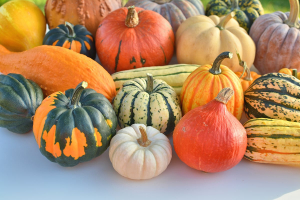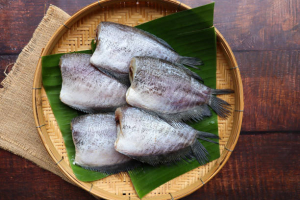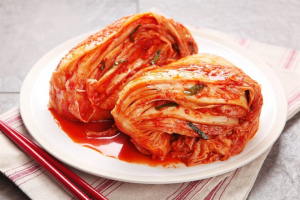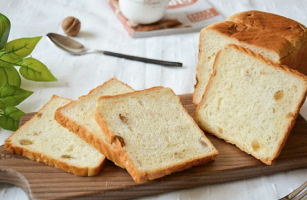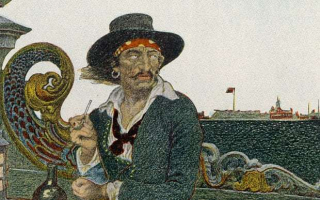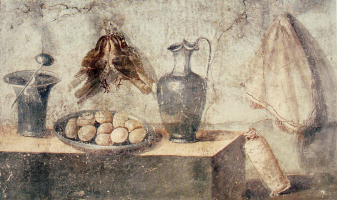Top 10 Most Famous Types of Pears
Pears are the pomaceous fruits that grow on pear trees, which are found in a variety of species. Pears come in a variety of species, each with unique ... read more...qualities, yet they all have comparable nutritional profiles. The juice is rich in antioxidants, vitamins, and minerals, and the fruit is generally characterized as mealy but sweet. Understanding how pears differ can help you choose the ideal one for your culinary needs and personal taste. Let's look at the greatest types of pears and what makes them unique.
-
The Williams' bon chrétien pear, often known as the Williams pear or the Bartlett pear in the United States and Canada, is the most widely produced type of pear outside of Asia. It is a cultivar of Pyrus communis, sometimes known as the European Pear. The fruit is shaped like a bell, which is regarded as the typical pear shape in the west, and its green skin becomes yellow as it ripens, however red-skinned derivative variants exist. It is a summer pear that is not as cold-hardy as some kinds. It is commonly eaten raw, but bakes nicely and is a popular option for canned or other processed pear usage.
Williams pears are high in antioxidants. Williams pears are high in antioxidants such as vitamin C and chlorogenic acid. These pears are the most popular and widely produced pear cultivar in the United States. It is a summer pear that is not as cold hardy as some kinds. It is commonly eaten raw, but bakes nicely and is a popular option for canned or other processed pear usage.
The Bartlett or Williams' Bon Chrétien pear has had an interesting voyage, but considering its favorable attributes, it's no surprise that it's so popular. Not only are these pears one of the largest varieties, but their juiciness and silky texture make them adaptable as a culinary element. Another thing to bear in mind is that this pear comes in both green and red variants.
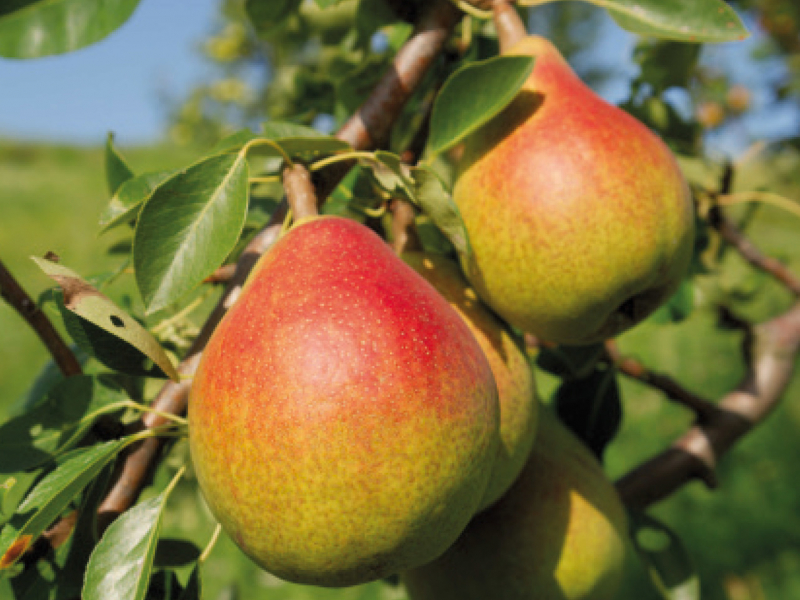
Williams' Bon Chrétien 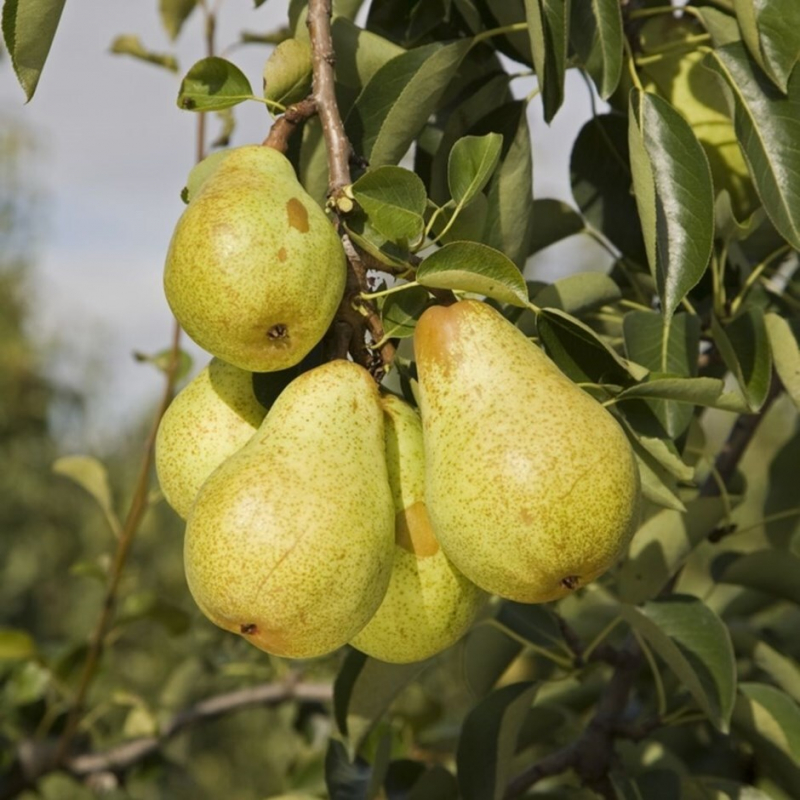
Williams' Bon Chrétien -
Anjou pears share several characteristics with their Bartlett counterparts. Anjou comes in red and green variants, and as USA Pears points out, they also go by more than one name: d'anjou. Because the word Anjou refers to a region in France, these egg-shaped pears were known as Beurré d' Anjou as they traveled throughout the world.
Of course, anyone who consumes fruit on a daily basis will tell you that timing is crucial. In other words, if you're going to bite into a tasty piece of fruit, make sure it's neither underripe nor overripe. Otherwise, both the flavor and texture may be compromised. According to USA Pears, unlike other fruits that change color as they ripen, green Anjou pears vary very little in look as they ripen. Fortunately, there's a quick way to prevent eating a green Anjou pear too soon or too late. Simply push the top of the pear (the portion with the stem) until it yields slightly, and you'll have a wonderful and ripe green Anjou.
Anjou pears are deliciously fresh and as a component in a variety of dishes since they are both juicy and thick. Anjou pears, for example, maybe poached or baked and are especially wonderful when grilled or roasted.
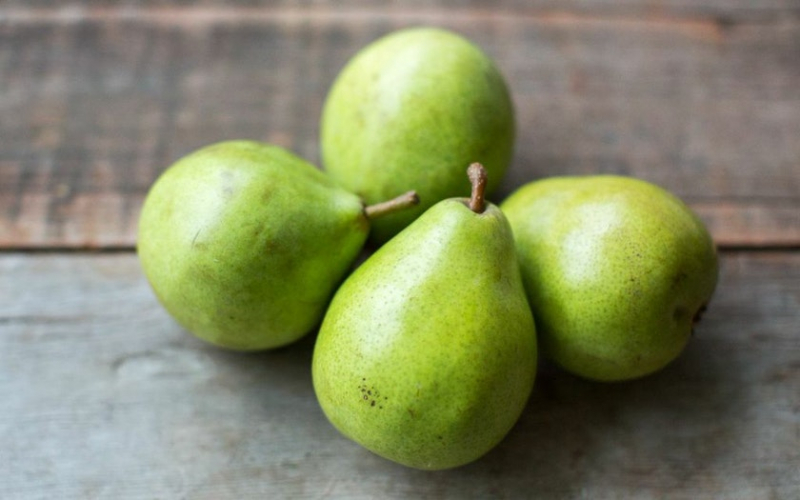
Green Anjou 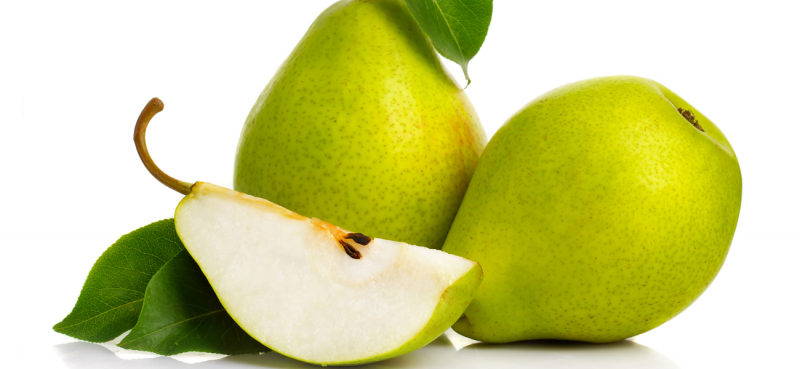
Green Anjou -
Starkrimson pears are so named because of their magnificent crimson red hue and strong, stocky stem. The Starkrimson is a sweet, mellow pear with a flowery scent. When ripe, it is highly juicy and has a lovely, smooth texture, making it ideal for snacking on salads, or any fresh application that highlights the brightness of its skin. Starkrimson pears, like Red Anjou and Red Bartlett, are frequently branded as Red Pears in supermarkets. The Starkrimson is a summer pear, which means it is harvested in August and is one of the first types to appear in markets at the start of pear season. It is available from August through November.
Starkrimson pears are so named because of their magnificent crimson red hue and strong, stocky stem. The Starkrimson is a sweet, mellow pear with a flowery scent. When ripe, it is highly juicy and has a lovely, smooth texture, making it ideal for snacking on salads, or any fresh application that highlights the brightness of its skin. Starkrimson pears, like Red Anjou and Red Bartlett, are frequently branded as Red Pears in supermarkets. The Starkrimson is a summer pear, which means it is harvested in August and is one of the first types to appear in markets at the start of pear season. It is available from August through November.
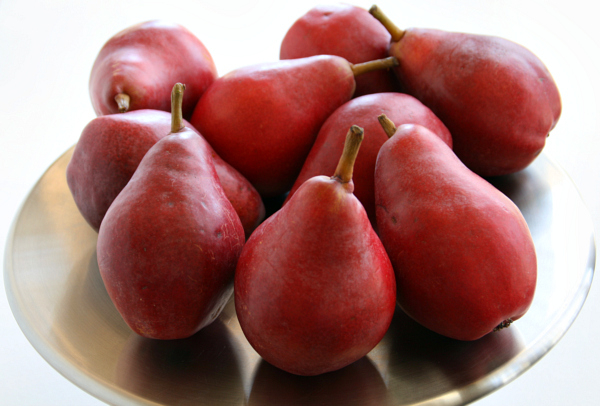
Starkrimson 
Starkrimson -
Comice comes in diverse sizes, but their morphology is distinct among species, with a rotund body and a fairly short, well-defined neck. They are often green in color, with a crimson flush covering tiny to large sections of the skin's surface. Some younger strains, on the other hand, are nearly totally red in hue. The succulent Comice may grow to be quite enormous, and the jumbo-sized beauties are sometimes found in gift boxes. Although pears, in general, are associated with the winter holidays, Comice has achieved special distinction as the "Christmas Pear". They are frequently the center of attention in holiday gift baskets and boxes purchased in grocery stores that produce aisles.
The sweet buttery flesh of Comice pairs perfectly with cheese, especially soft ripening cheeses like Brie, Camembert, or any of the blues. Comice's remarkable juiciness, which paradoxically makes them a poor candidate for any operation that requires heating, is what gets them such high praise for eating freshly sliced. Ripen a Comice pear, then cut it into sections and serve with your favorite cheese. Comice fans are familiar with this mix; others have yet to learn what they've been missing! Allow your taste buds to lead you!
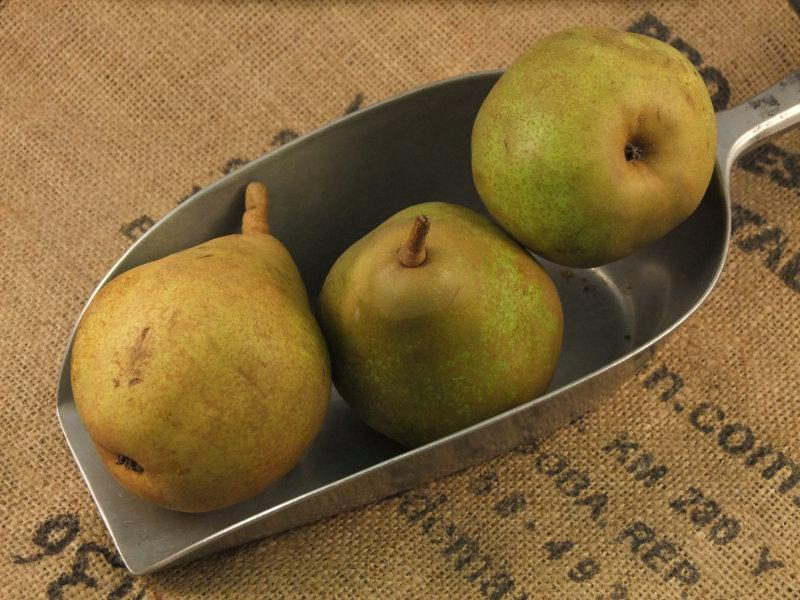
Comice 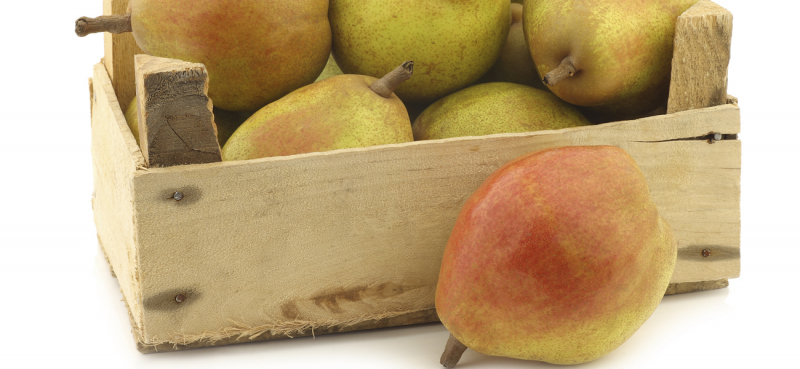
Comice -
You've probably heard the term "Concorde" in reference to grapes, but don't ignore the delectable Concorde pear. This pear has a similar flavor to Comice pears, and for good cause, according to USA Pears. Concorde pears are a hybrid between Comice and another pear variety.
Yes, much as crossbreeding two distinct dog breeds results in an altogether different animal, it is feasible to combine the attributes of numerous pears. In this scenario, the Concorde is derived from the Comice and the Conference pear, the latter of which accounts for its longer neck than the Comice. It is also crisper and denser than Comice pears, making it an excellent option. In fact, don't be afraid to ramp up the heat (within reason), because these pears retain their form better than other pear kinds when cooked at high temperatures.
Aside from the neck and density, there are a few more indicators that a pear is a Concorde pear. If the pear has a stem, see if it's long and curved, which is typical of Concordes. Concorde pears are also yellow-green in hue with some golden russet. Also, although other fruits brown fast after being cut, Concorde pears color more slowly, allowing for a beautiful display.
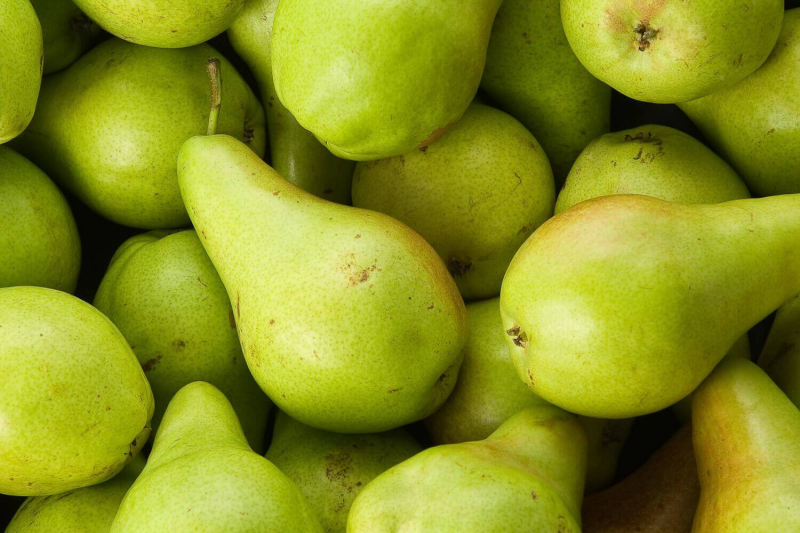
Concorde 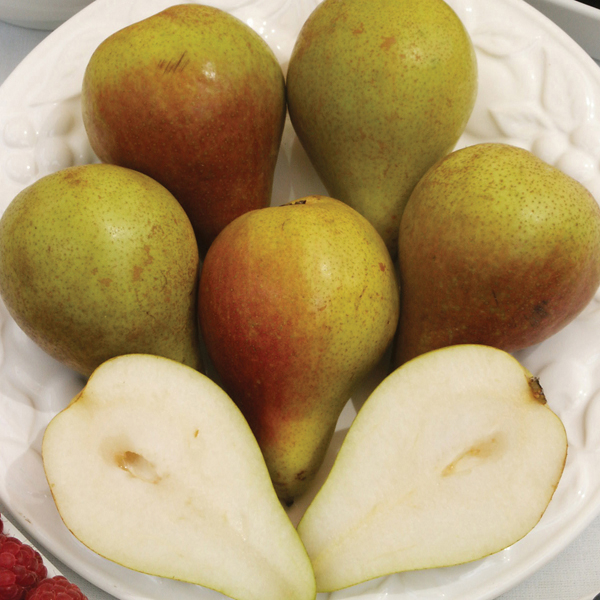
Concorde -
For a variety of reasons, Bosc pears stand out in a crowd. Their long, curving stem and graceful extended neck that gradually spreads to a full rounded base provide a distinct silhouette among pears. Bosc is also distinguished by its hue, which is a warm cinnamon brown with russeting on the skin's surface. Bosc has a natural russeting look. The russeting may cover the full surface of the pear or only a small area of the skin. The quality of the fruit is unaffected in either circumstance. Because of the natural beauty it provides, many artists utilize the russeted Bosc pear in their paintings, sketches, and photographs.
Bosc pears are a popular cultivar that can be purchased in most grocery shops during their season. Beginning in late September, look for them in the produce department. They are frequently part of a big display of several distinct types during the fall and winter months. Bosc pears are harvested in the fall in Oregon and Washington, and they are available from late September through April.
Bosc pears have firmer, denser flesh than other pear kinds, making them suitable for baking, broiling, or poaching. They keep their form and texture better than other types, and their flavor is less prone to be overpowered by strong spices such as cinnamon, clove, or nutmeg. Of course, they're also great for fresh eating, especially if you enjoy a firm texture.
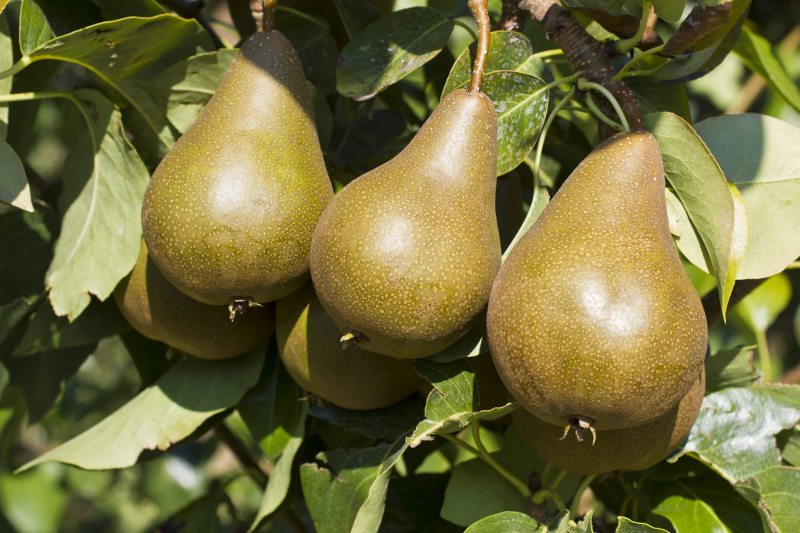
Bosc 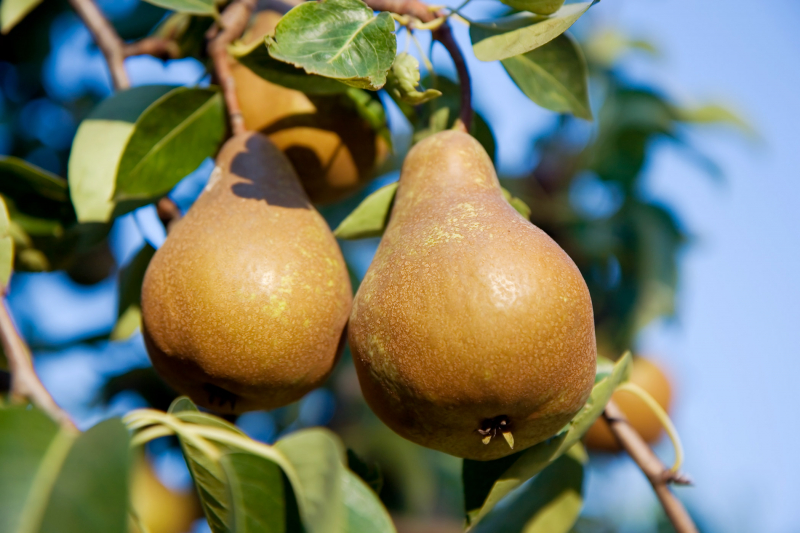
Bosc -
The Hood pear tree bears enormous, yellow-green fruit. The meat is faintly flavored and has a distinct scent. Hood pear trees, a popular Asian pear, require relatively little cold (1-200 hours). Fire blight resistance is excellent. Other Asian pears, particularly the Flordahome pear, pollinate it. USDA Zones 6 through 10. An extremely sturdy tree that produces a large number of edible fruits. Hood pear trees thrive in the moderate winter climes of Southern California, including Los Angeles, Santa Barbara, and Orange County. Most of the United States, down to USDA Zone 6, are cold tolerant.
'Hood' is a popular cultivar for growing in warmer climates. It bears pears that are chartreuse green with russet mottling. The flesh is sweet and mild with a melting texture, making it ideal for fresh eating as well as baking and preserving. In early spring, soft, white blossoms appear, followed by huge, squat fruits that mature in early August. Autumn leaves put on a colorful display of yellow and orange. The mature height of the upright, oval shape is 15 to 20 feet, with a spread of 12 to 15 feet.
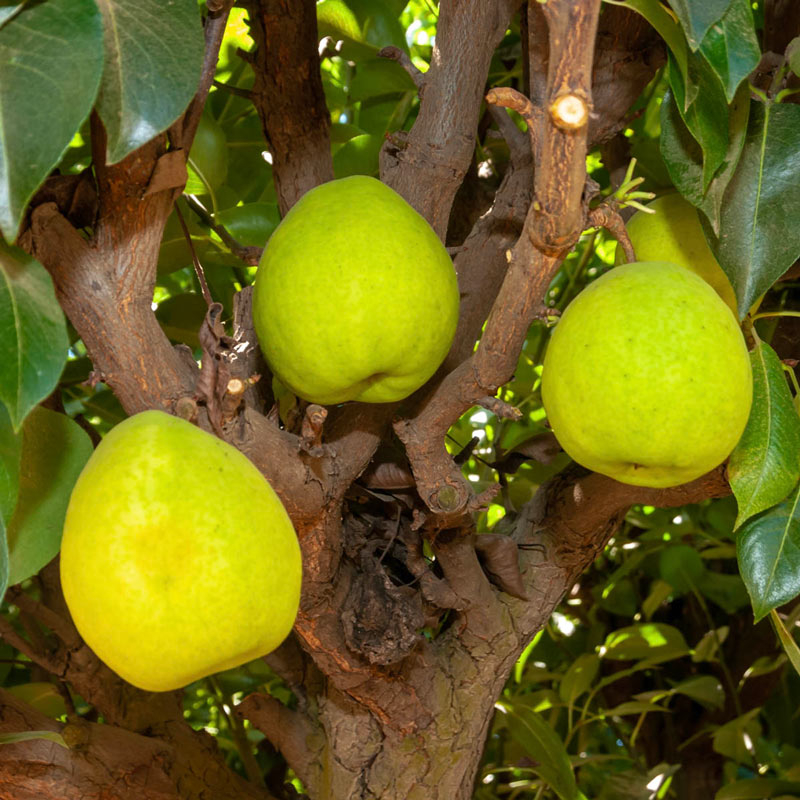
Hood 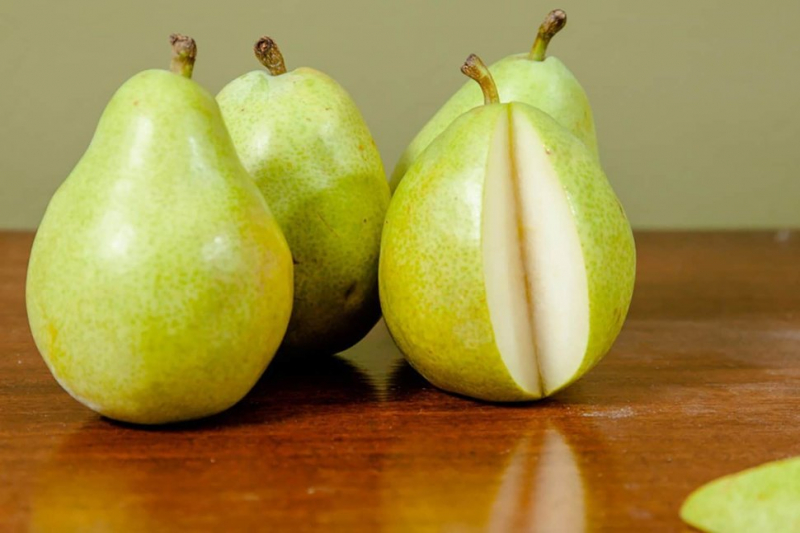
Hood -
Kieffer pears range in size from medium to big and have an elongated form with a wide bottom that tapers into a smaller, rounded neck. The skin is semi-smooth and light yellow to pale green in color, with strong lenticels with a deep crimson blush, while the stem is thin and dark brown. The flesh is gritty, crisp, and hard, with a central core encasing a few dark brown seeds. Kieffer pears are said to have a musky scent and a juicy, mellow, sweet flavor.
Kieffer pears, botanically classed as a cross between the European bartlett pear, Pyrus communis, and the Asian sand pear, Pyrus pyrifolia, are an old American variety that, like apricots and apples, belongs to the Rosaceae family. Kieffer pears were previously a popular kind to grow in orchards and use as agricultural property boundaries, but demand has declined to owe to current consumer tastes. Kieffer pear trees may grow up to six meters tall and are disease resistant, productive, hardy, and have a long life. Kieffer pears, which are classed as a winter pears used for canning, baking, and fresh eating, require a chilling period to allow the fruit to mature over time.
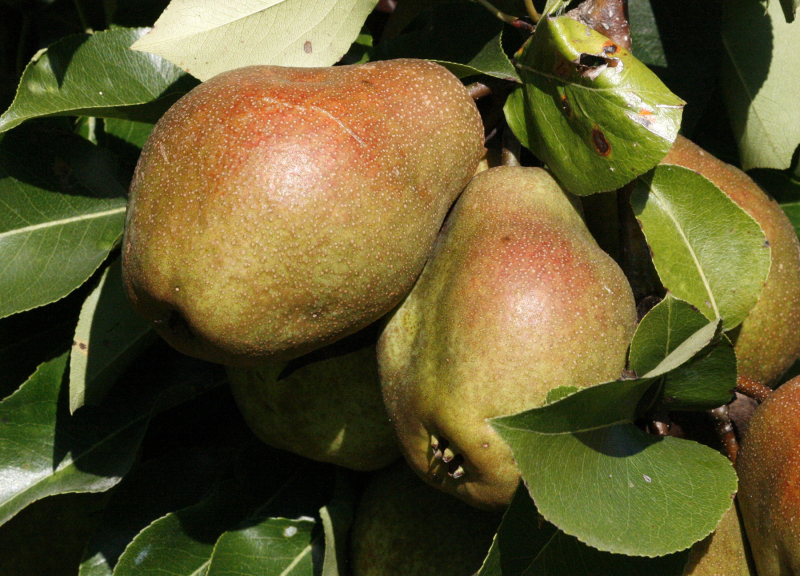
Kieffer 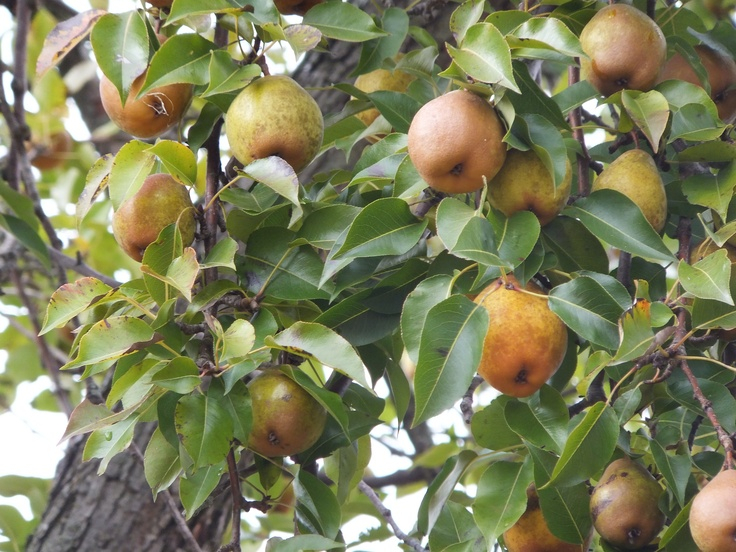
Kieffer -
The Seckel was named after a Pennsylvania farmer who initially introduced it in the late 1800s. It was one among the types planted at Monticello by Thomas Jefferson, who remarked it "surpassed everything I had tasted since leaving France, and equaled any pear I had seen there". A. J. Downing, a distinguished horticulturist, ranked the flavor of the Seckel higher than that of European pear cultivars.
The Seckel pear tree is a tiny tree, growing to a height of 15-20 feet and a width of around 10 feet. Its bark is light grey and resembles that of an apple tree. Its white blooms blossom in the middle of spring. The tree is cold-hardy, frost-resistant, and fire-resistant. The Seckel is a winter pear that is picked in the fall and may be preserved for approximately 5 months. The fruit has a coarser grain than other European kinds and is highly delicious and crisp. They are relatively little in comparison to most other pears, measuring less than 3" in length and breadth.
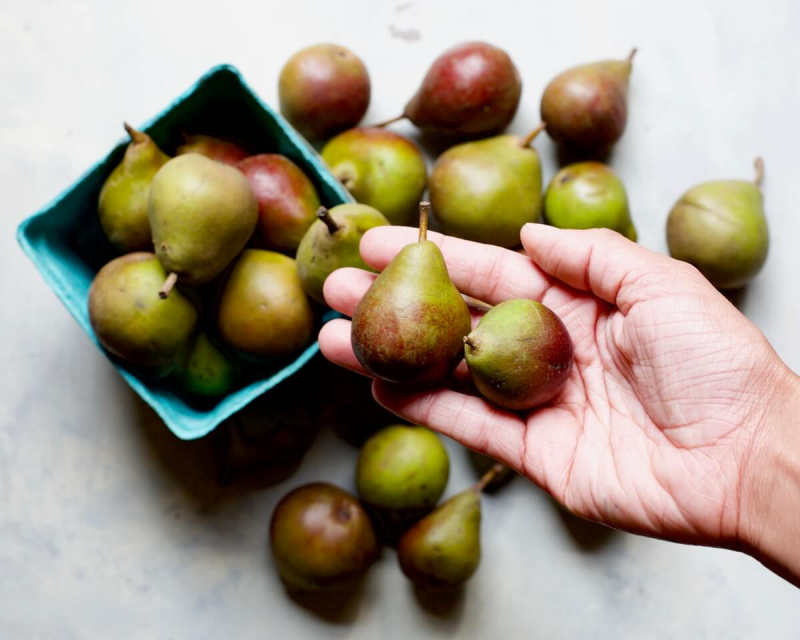
Seckel 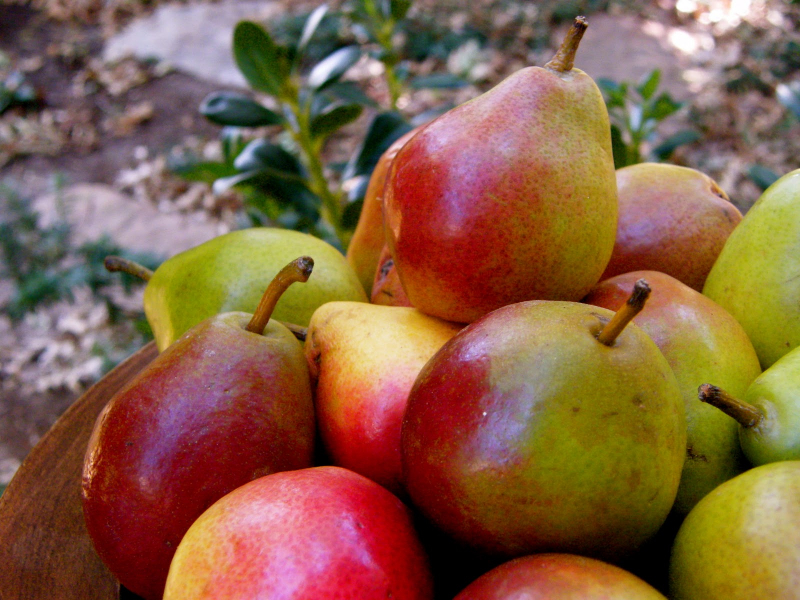
Seckel -
Summercrisp is a cold-hardy, early-season pear developed by the University of Minnesota for usage in cold locations where most pear cultivars do not survive and frequently do not fruit. The name of this cultivar alludes to its early harvest season. It also implies that the fruit is best consumed before it has ripened; the eating quality is finest when the flesh is firm and crisp. The fruits are magnificent chartreuse pears with a crimson flush that are plentiful in late summer.
If let falls on the grass or sidewalks, the fruit can be unsightly and may need occasional cleanup. This variety is a cross between two species. Summercrisp Pear matures to reach around 25 feet tall with a spread of 20 feet. It has a low canopy and a normal clearance of 4 feet from the ground, making it ideal for planting beneath power lines. Summercrisp Pear blooms in mid-spring with gorgeous clusters of white flowers with purple anthers along the stems. It grows quickly and may be expected to survive for 70 years or more under perfect conditions.
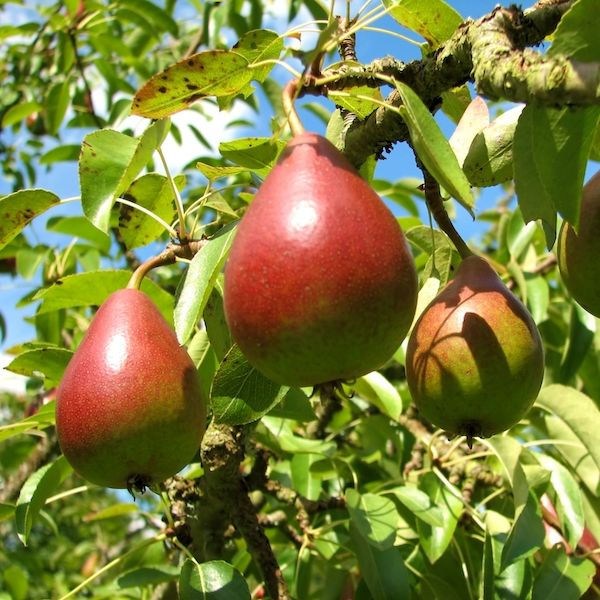
Summercrisp 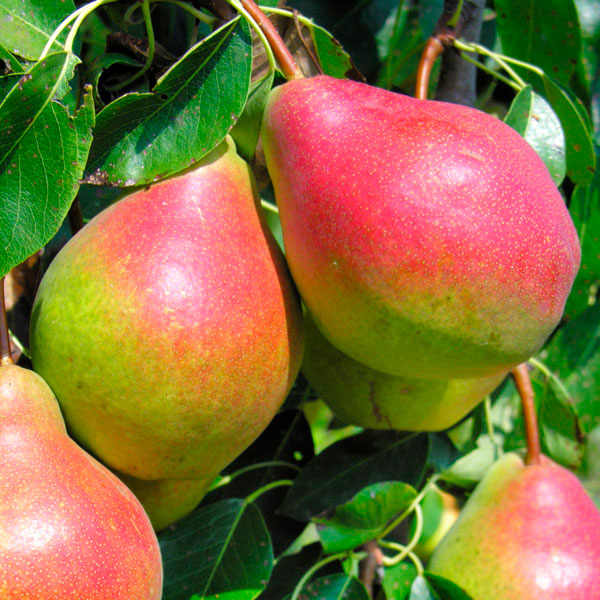
Summercrisp












